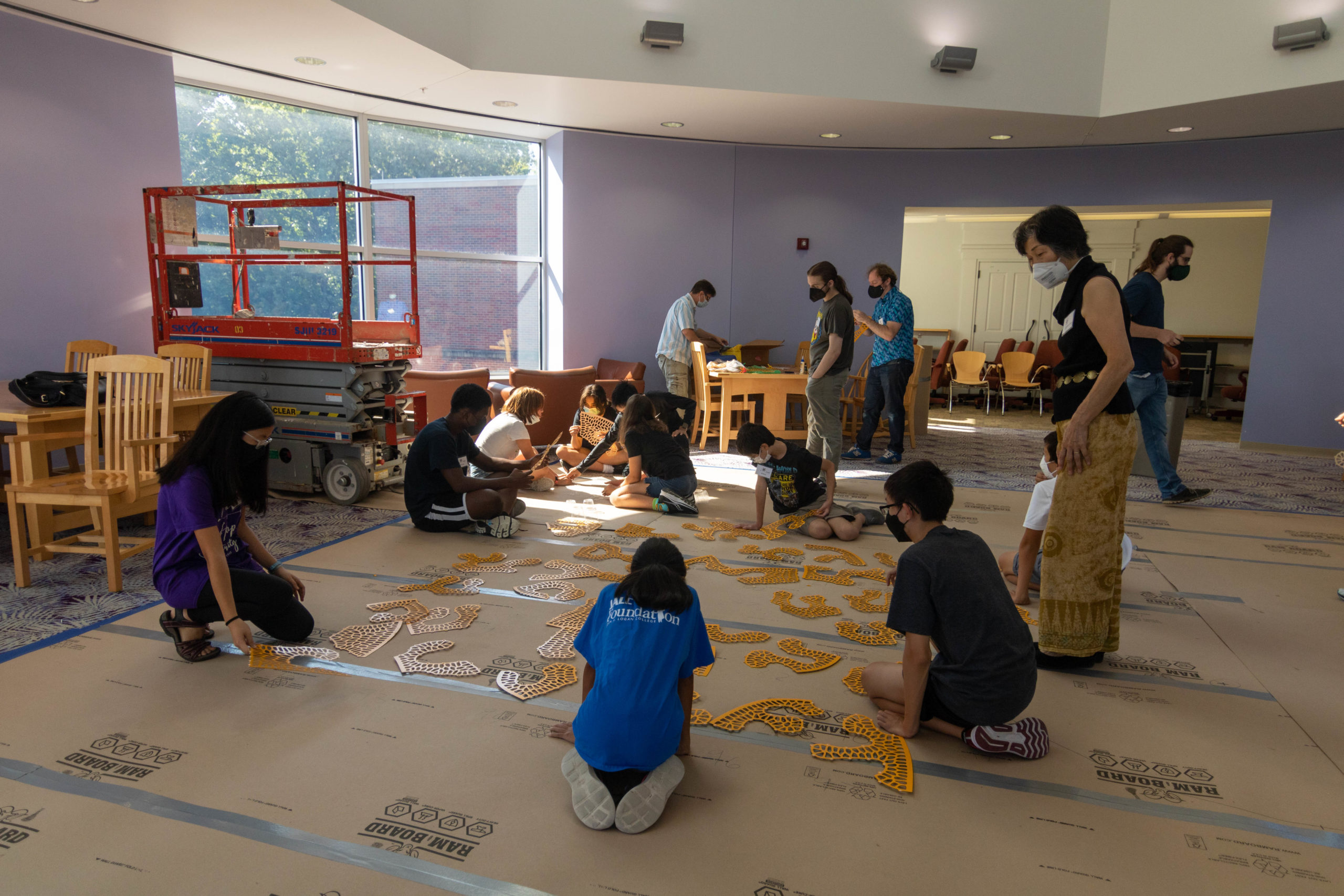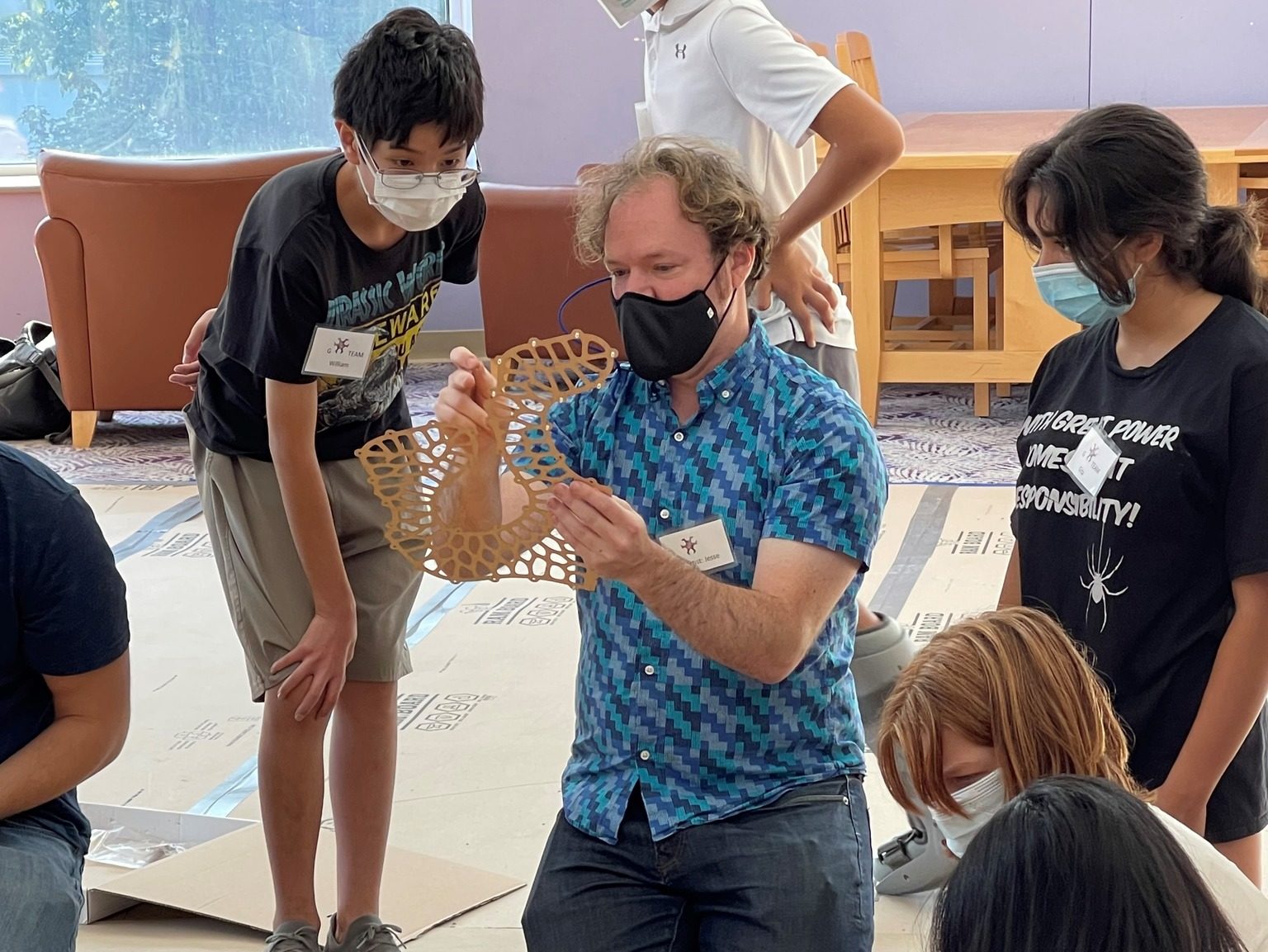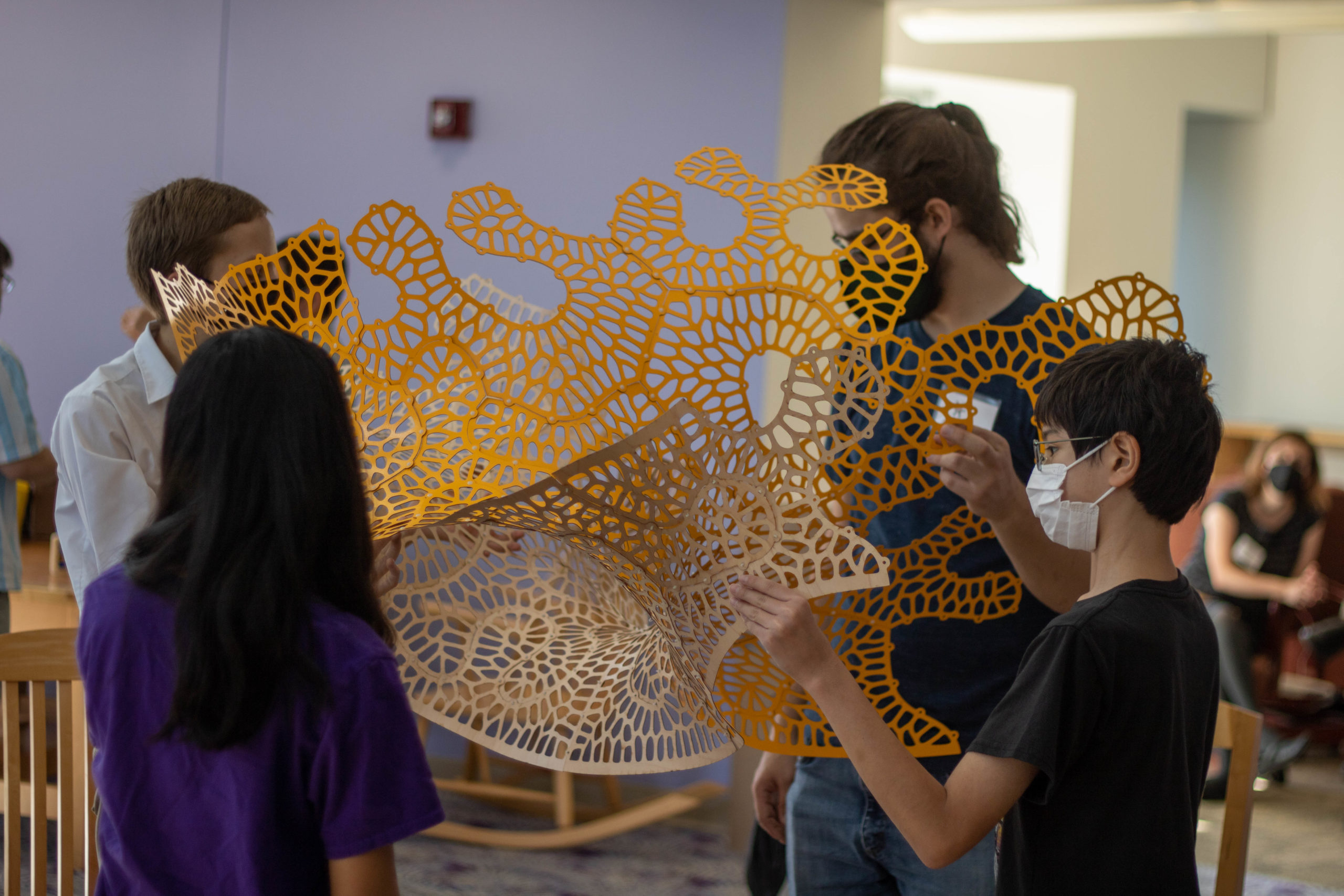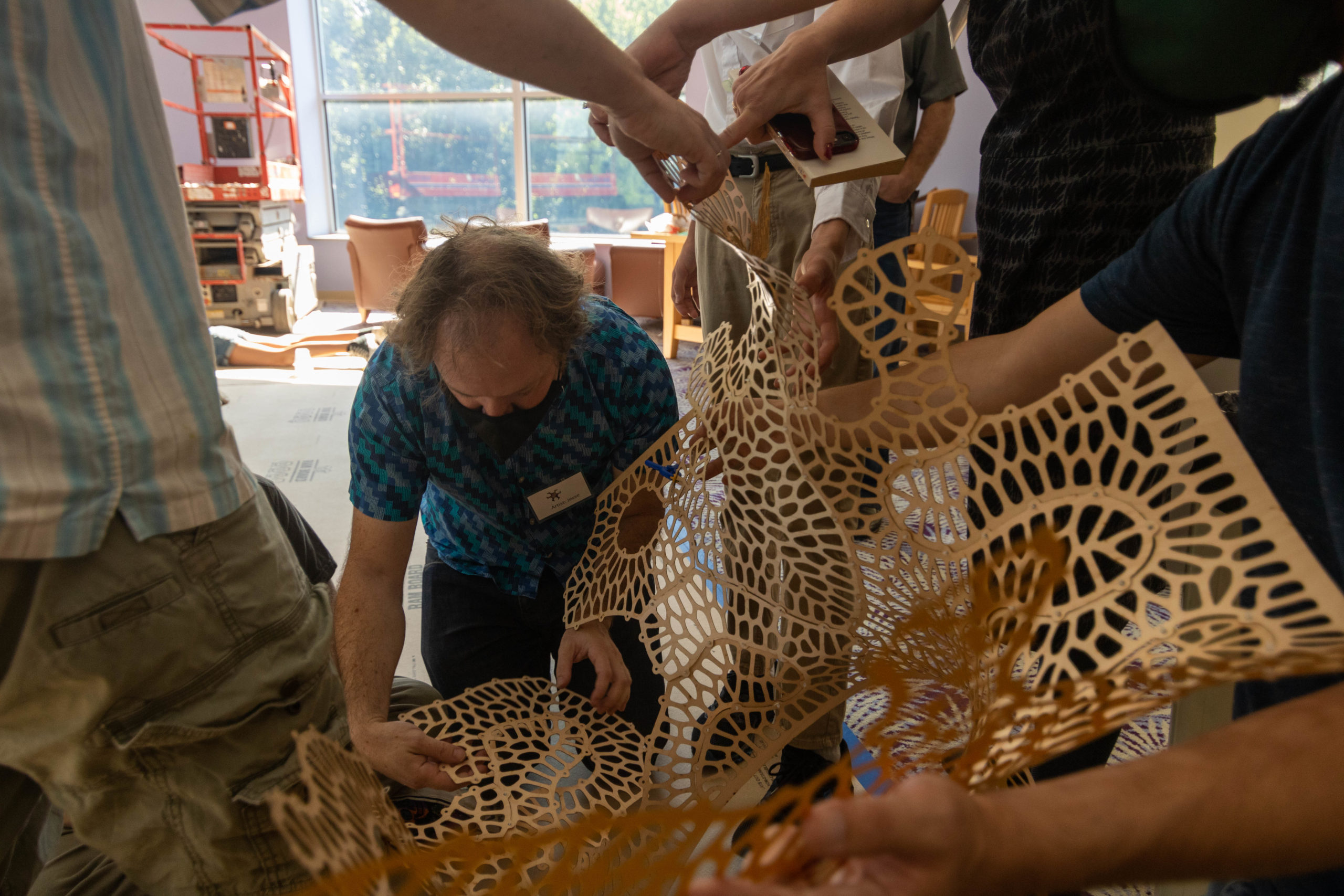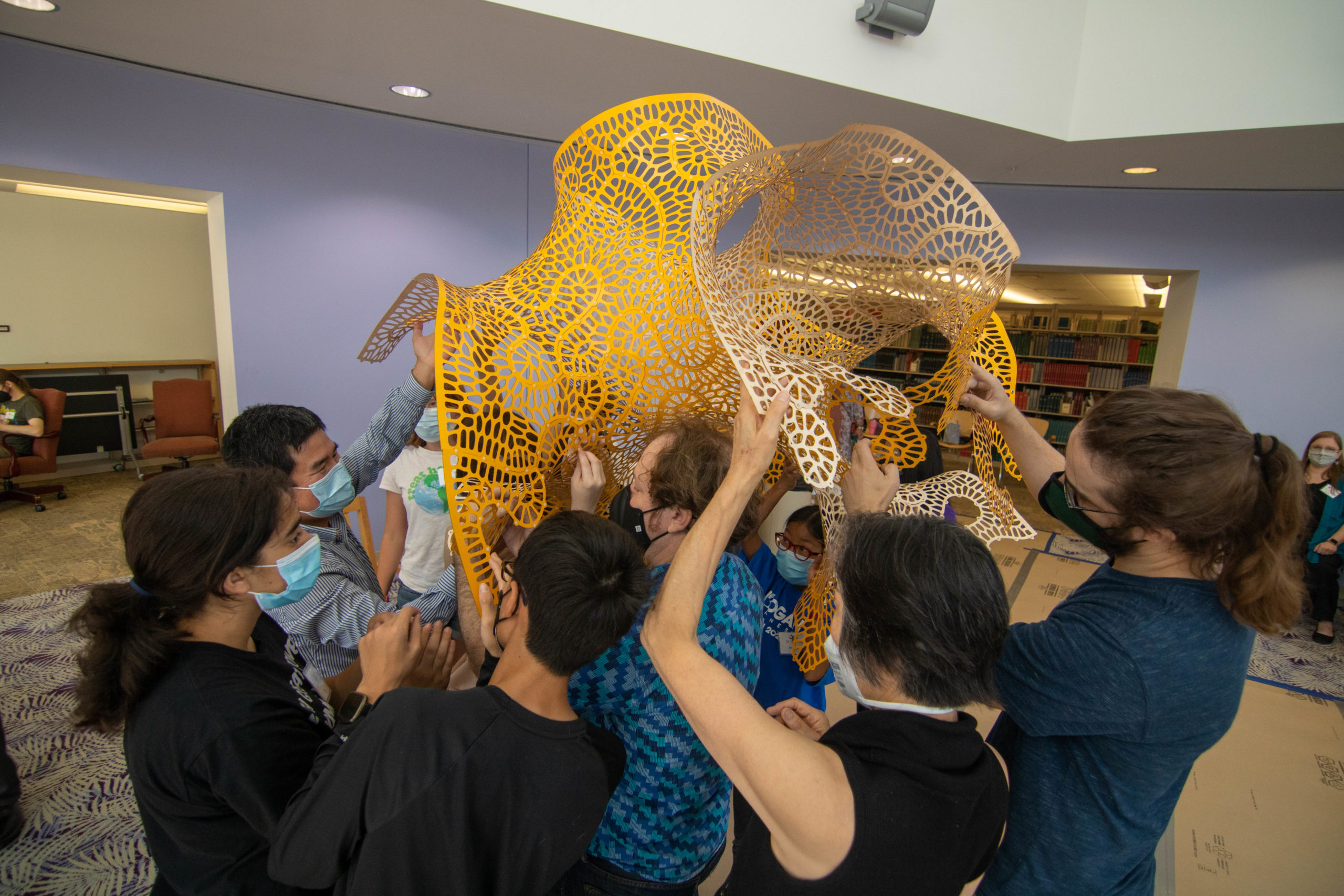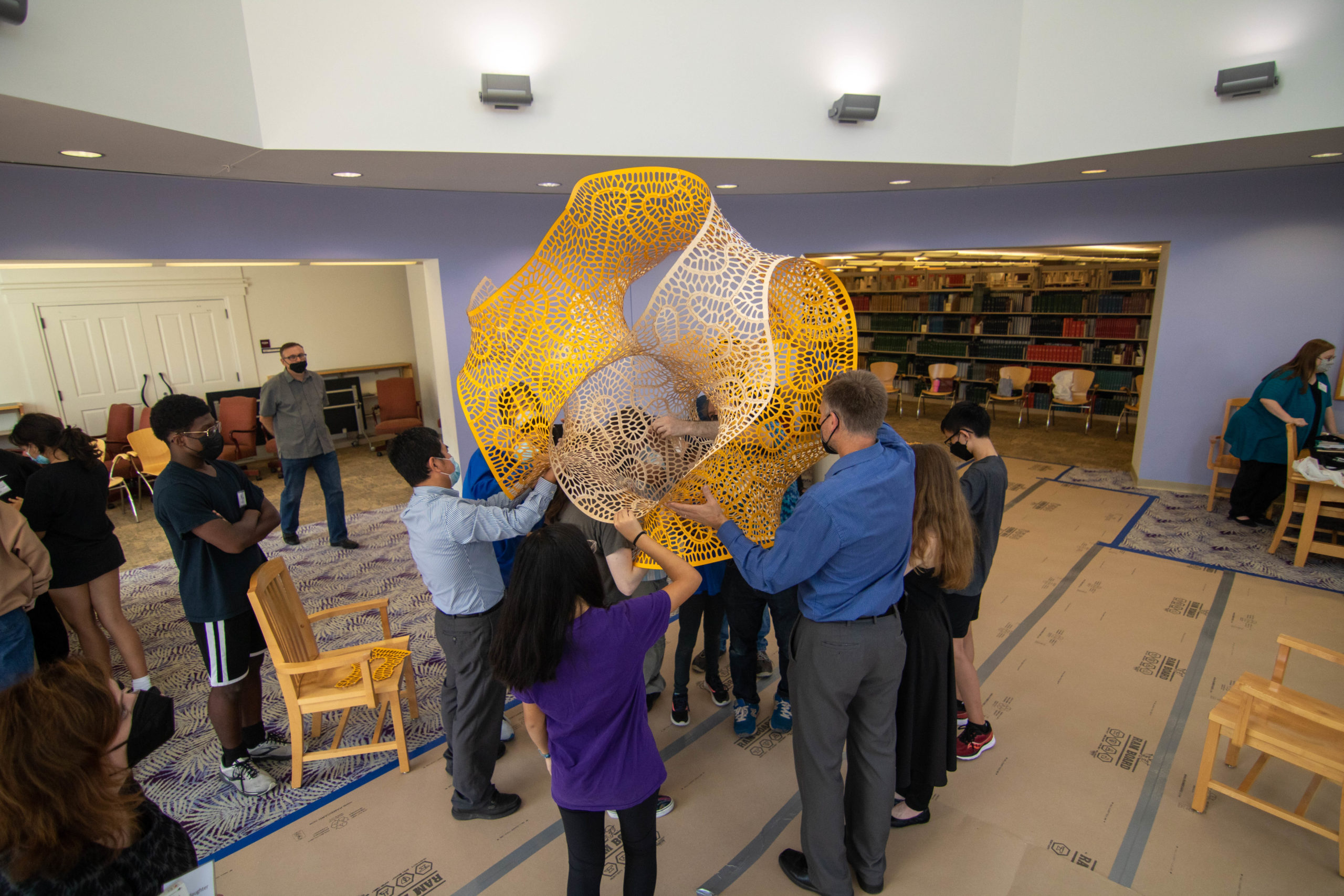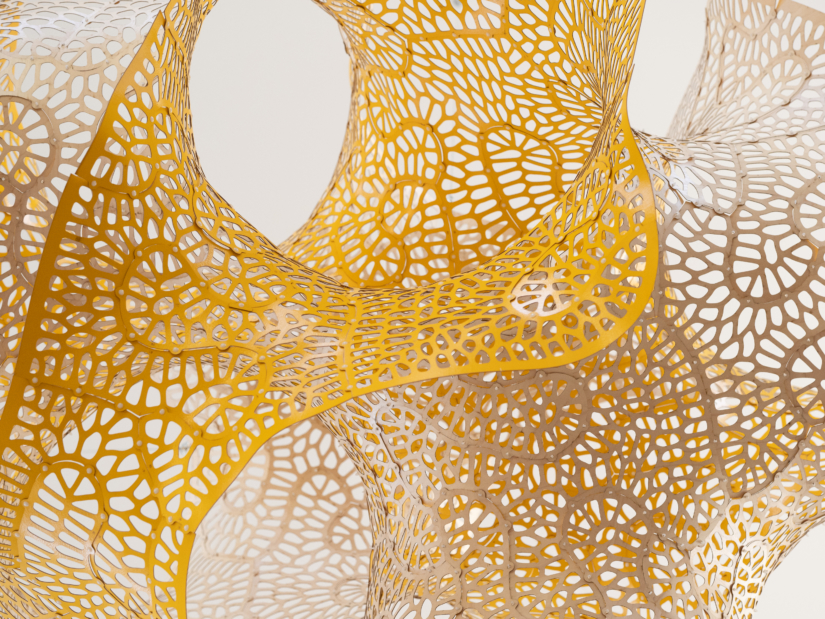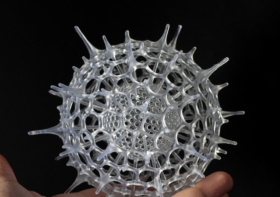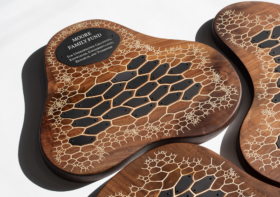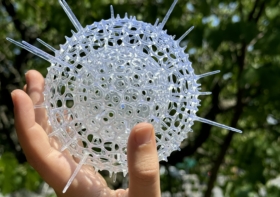Yellow Moon Gyroid
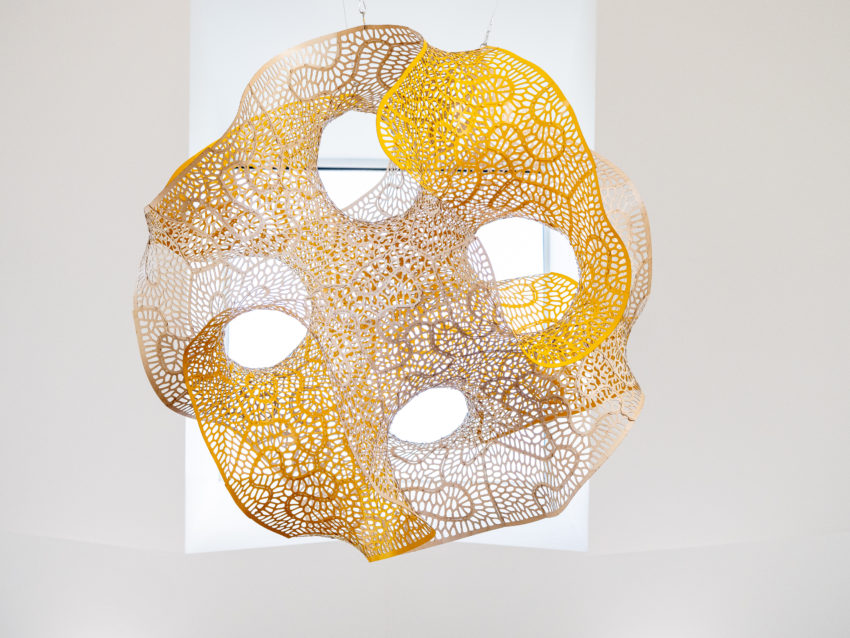
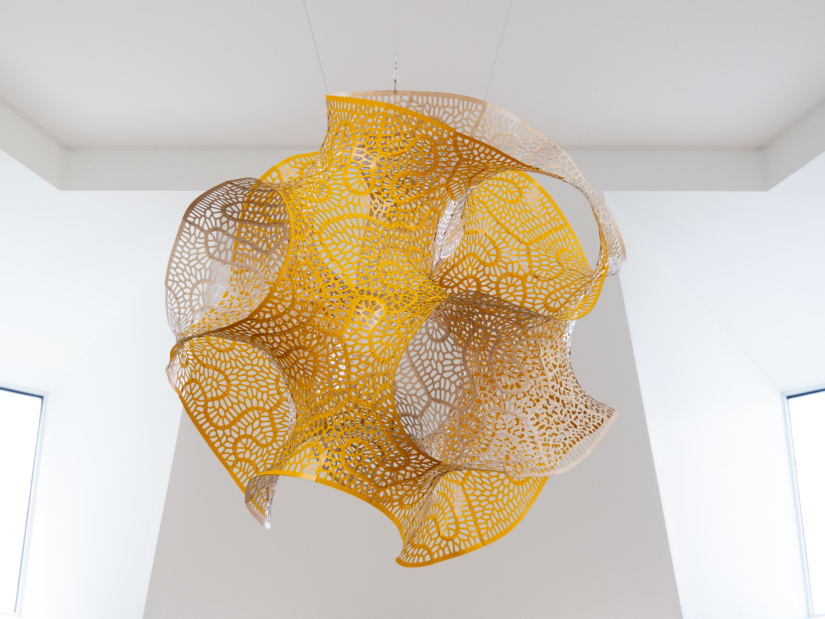
Yellow moon gyroid is a sculpture we created to honor the work of mathematician Alan Schoen. It is now permanently installed at the Morris Library of Southern Illinois University (SIU) in Carbondale, Illinois. The sculpture is a 5ft spherical gyroid made of 93 unique plywood panels which fit together like puzzle pieces. Alan Schoen discovered the gyroid minimal surface in 1968, and the surface has exploded in popularity with the advent of 3D printing with uses from hobbyist home printers to nuclear engineering. We are grateful for the opportunity to meet Alan and to commemorate his legacy.
What’s a gyroid?
The gyroid is a periodic minimal surface. A minimal surface is a surface that has the smallest area possible with a given boundary. You can model surfaces like this using soap bubbles, which was famously used by the Eameses in their exhibition “Mathematica: A World of Numbers… and Beyond.”
It turns out these surfaces also have really interesting structural properties, which have been explored by architects like Frei Otto in the creation of lightweight tensile structures. Periodic simply means it tiles in space, so you can fill an arbitrary space simply through repetition. While the gyroid was initially a purely mathematical discovery, scientists have found that gyroid occurs in nature. For example, the green color of Thecla opisena comes not from pigment but from the way the gyroid microstructures in the wings interact with the wavelength of light. Alan called periodic minimal surfaces “labyrinth” surfaces, and their foam-like nature is what makes them so useful in engineering.
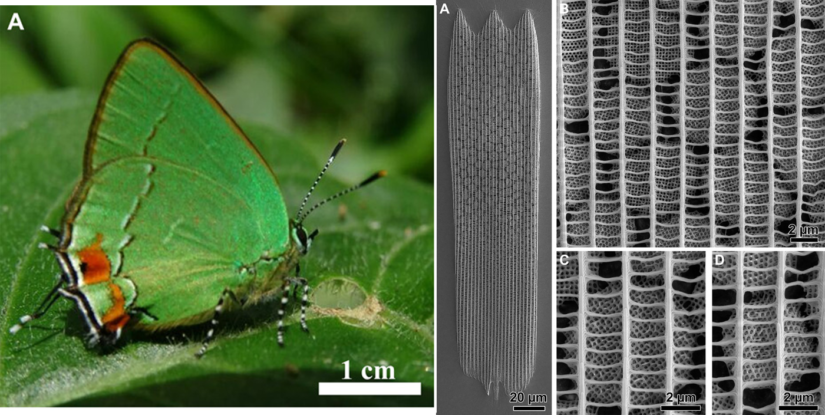
Alan Schoen was not just a mathematician, but a tinkerer, maker, and educator. In fact, he first started at SIU teaching mathematics in the design department before becoming a member of the mathematics faculty. His website is a history of his work and a treasure trove of interesting topics. There are also some great videos of him lecturing about minimal surfaces from the 1970s.
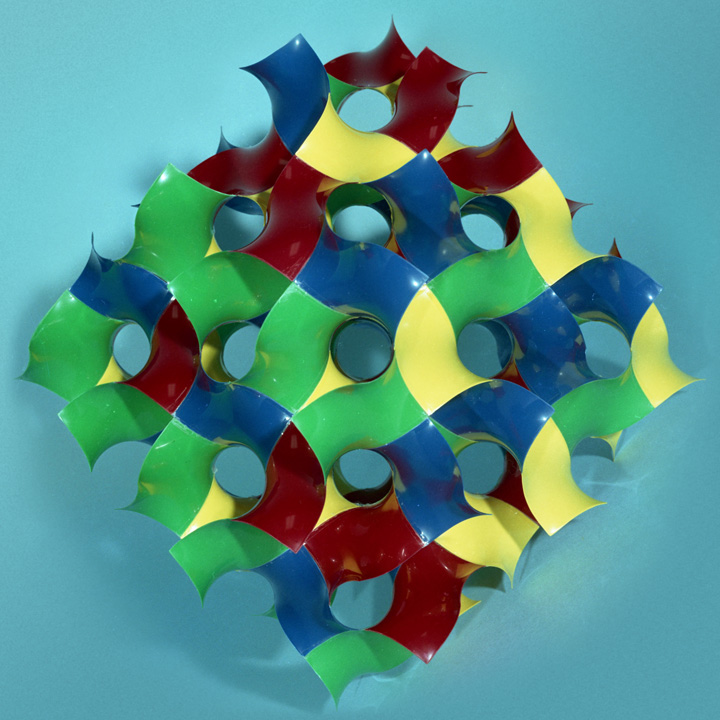
Alan Schoen discovered the gyroid in 1968 while working as a NASA research scientist. This was pretty much before the era of computers, so the first models of the surface were actually made out of soap films. In the 1970s, the MoMA commissioned a 7 foot gyroid sculpture for an exhibit about Mathematics and Art. Tragically, Alan’s NASA funding was abruptly pulled and the sculpture was never made. Since then, Alan had always dreamed of making a large gyroid sculpture. Alan and his wife Reiko Schoen contacted us in April of 2022 about making a sculpture to fulfill that dream.
Design generation
The Yellow Moon Gyroid builds upon our previous sculpture Puzzle Cell Complex which we created in Houston, TX in 2020. It is a 5 foot tall wooden gyroid surface composed of 93 unique panels that fit together like 3-dimensional puzzle pieces.
Most of the things we make at Nervous System are objects you can hold in one hand. Creating a larger sculpture gives us an opportunity to design something with multiple layers of pattern employing different systems at different scales. We love how in nature, the closer you look, the more you can discover, and we want our designs to convey that same sense of wonder. This piece expresses our fascination with multi-scale structures, combining fabrication with geometric logic, and exploring new computational techniques.
The sculpture combines 3 levels of structure. The top level is the gyroid surface. The next level is the panels which are generated through an optimization process called variational surface cutting. These panels resemble the shape of the pavement cells seen in leaves. Finally, a perforated microstructure of cells adds flexibility to the panels allowing them the curve. The cells are centroidally optimized voronoi cells which are stretched to align with the curvature of the surface.
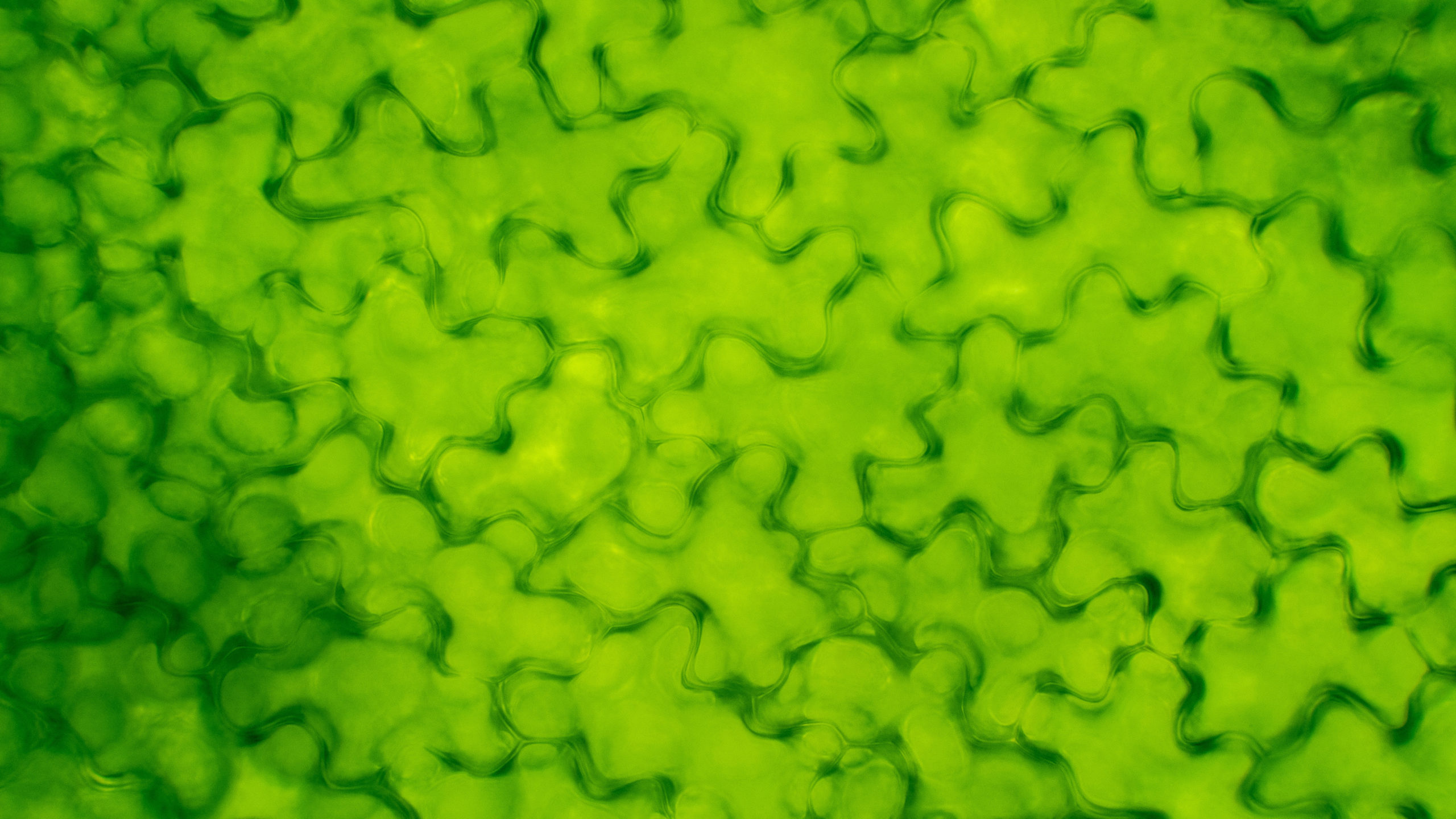
Fabrication and Collaborative Assembly
The panels were lasercut at Nervous System in Catskill, NY from thin plywood and shipped to Illinois flat-packed in 2 pizza boxes! The three-dimensional form of the gyroid is encoded in the shape of the panels and how they connect. Thus, the sculpture can be assembled by following the markings on the pieces and a simple set of instructions. Assembly was done collaboratively with local middle and high school students from the SIU community. The assembly occurred over the course of 2-3 hours in the Morris Library where Yellow Moon Gyroid is now permanently installed.
